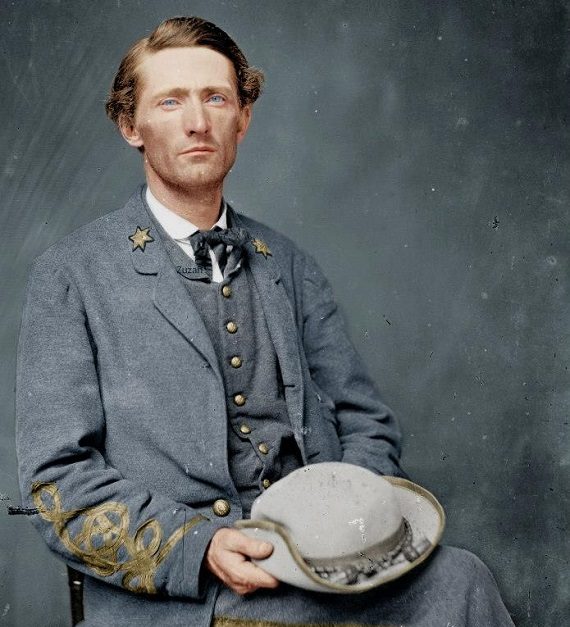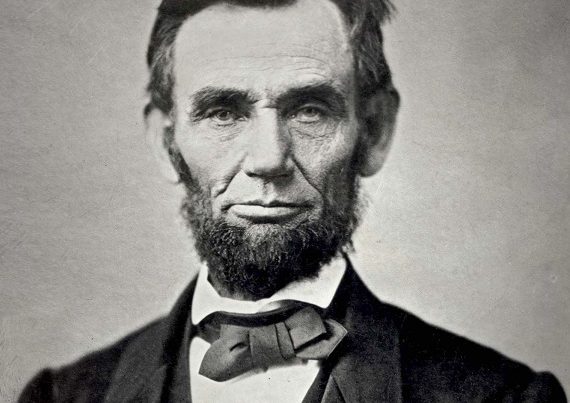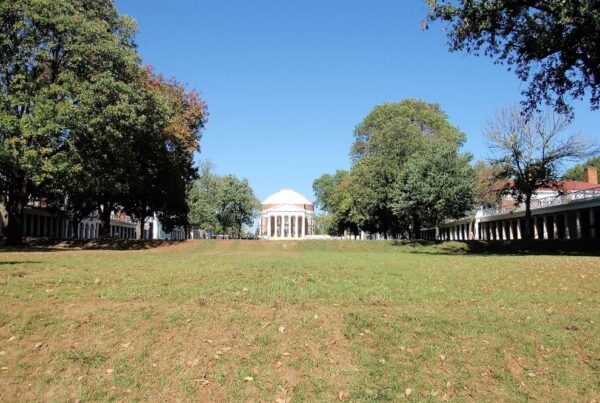With all due apologies to Samuel Clemens, I like to think of myself as a Connecticut Confederate. Therefore, I was delighted to find recently that, in addition to being a self-made devotee of the “Lost Cause” and an ardent admirer of the South in general, I also have at least two actual ancestors who served gallantly in the Confederate Army throughout the War Between the States.
To backtrack a bit, however, my initial interest in the War for Southern Independence began about eighty years ago, even though I must confess I did not refer to the War by that name at the time. It all started when my grandfather gave me one of his early school books, an original copy of “American History Stories” by Dr. Mara Louise Pratt, printed by the Educational Publishing Company of Boston in 1891. While I found the stories fascinating, the book, of course, presented the conflict from an entirely Yankee perspective, and it was not until after World War Two when I landed in Augusta, Georgia, following a tour of Occupation duty in Tokyo, Japan, and then attended the University of Georgia, that I discovered just how much of what I had been taught about the “Civil War” had to be relearned. Since then I have been a complete convert to the Confederacy, as well as continuing an abiding interest in all aspects of the War Between the States. I might toss in the fact that after moving to New York State from Georgia in the mid-1950s, I had the honor of participating in a number of North-South Skirmishes there as a member of the Clinch Rifles of Augusta (Company “A” of the 5th Georgia Infantry Regiment).
A few years ago, I began a new historical, and more personal, pursuit . . . genealogical research into my family’s past. I began with my father’s family, which came to America from East Prussia in the latter part of the 19th Century, and then started on my mother’s ancestors. Here the going became far more complex and historically interesting, as I could trace one branch, the Howland family, all the way back to 15th Century England. One direct ancestor was Henry Howland, the brother of John Howland who arrived in the New World aboard the “Mayflower” in 1620. Henry had followed his brother to the Plymouth Colony three years later and became the constable of nearby Duxbury. By the 18th Century, some members of the family began to migrate westward to New York State, where my great, great, great grandfather, Egbert Howland, finally landed in the hamlet of Lake Hill in the Town of Woodstock. While Egbert died over twenty years before I was born, I knew almost all of his thirteen children, including my great, great aunt Madge who married a man from the village of Aldie in Loudoun County, Virginia, Julius Augustus Simpson.
Uncle “Jules” was a truly unique character, and one of my favorite relatives. He was the postmaster in Lake Hill for many years, with the post office being housed in the “Trading Post,” which was his combination grocery store and gas station located on the main highway through town. As a child, I loved to listen to Uncle “Jules” tell stories in his heavy Southern drawl about how his father had fought in the Confederate Army during the War. I must admit though that most of the family tended to discount his fanciful yarns about the many battles in which his father had participated, including being wounded at Gettysburg, and the account of how his father had surrendered with General Lee at Appomattox.
Last year, however, I finally began to dig more deeply into my Virginia ancestor’s Southern roots, and found to my great delight that Uncle “Jules” tales had all been true after all. I discovered that his father, Samuel Leyton (or Peyton) Simpson, had enlisted as a private in Company “B” (the “Quantico Guards”) of the 49th Virginia Infantry Regiment on August 13, 1861. Samuel Simpson served with the regiment in many major engagements throughout the War, including the Peninsula Campaign, Second Manassas, Sharpsburg, Fredericksburg, Chancellorsville, Gettysburg, the Wilderness, Spotsylvania, Cold Harbor, the Valley Campaign of 1864, the siege of Petersburg, and the final battles just prior to Appomattox. Furthermore, just as Uncle “Jules” had said in his stories, his father really had been wounded at Gettysburg. It happened on July 3, 1863, during Lt. General Richard Ewell’s attack on Culp’s Hill. In that battle, the 49th Virginia, then under the command of Lt. Col. J. Catlett Gibson, was part of Brig. General Harry Hay’s brigade in Maj. General Jubal Early’s division, with the regiment posted on the extreme left flank of the Confederate line near Spangler’s Spring. While with Ewell’s Second Corps in Virginia’s Shenandoah Valley during the fall of 1864, Private Simpson was again wounded, this time in the right arm, while taking part in the third battle of Winchester on September 19, and again in the jaw at Sayler’s Creek on April 6, 1865, just three days prior to his surrendering with General Lee at Appomattox Court House as one of the remaining forty-six enlisted men and nine officers of the 49th Regiment.
Also surrendering with the same regiment at Appomattox was the brother-in-law of Samuel Simpson’s father, Dr. William Jordan Luck of Loudoun County. Dr. Luck had enlisted in the 49th Virginia at Harper’s Ferry as an assistant surgeon in May 1861, and participated in the Battle of First Manassas the following month. He later was transferred to the artillery as the surgeon in Graham’s Battery, which was a unit in Maj. General J. E. B. Stuart’s Petersburg Horse Artillery. Surgeon Luck also served with the 1st Virginia Cavalry from time to time, and it was while on duty with the cavalry that he met and became life-long friends with the Virginia partisan commander, Col. John S. Mosby, the famed “Gray Ghost of the Confederacy.” I am also proud to add as a footnote that my membership in the Sons of Confederate Veterans is based on these two outstanding ancestors who served with honor in the Army of Northern Virginia throughout all of its glorious history.
In retrospect, it is now sad indeed to think that the history represented by those such as my Southern ancestors is now being unfairly tarred with the ugly charge of racism. It is equally sad to hear the cries being raised throughout the land to tear down all the banners under which such men served their country, as well as to remove from public view all the monuments and references to their memories. Several years ago when visiting Fort Sumter in Charleston, I was kindly allowed to lower the Stainless Banner of the Confederacy at the close of the day. It truly sickens me now to learn that all such banners will be forever furled at that and other historic sites in the South.







